Introduction
The Nikon D800 has been one of the most successful cameras for the company in recent times, despite the relative high price and lofty aspirations. What’s perhaps even more remarkable is the more specialist more expensive version, the D800E with its unusual optical low pass filter sans anti aliasing properties has seen demand outstrip supply since its introduction two years ago.
Although not unexpected, this new mid-term upgrade consolidates the two previous offerings with the familiar exterior and 36-Mpix FX format sensor into a single model but does away with the image blurring optical low-pass filter completely. While the pixel count remains the same Nikon claims the sensor is a new model and surpasses its predecessor as the benchmark for high-resolution images.
Besides the sensor the revamped model boasts a number of other refinements. First is the adoption of the new EXPEED 4 level processor introduced with the flagship D4s that with the new sensor permits a lower ISO 64 native sensitivity and a new upper limit of ISO 12,800, plus expansion to ISO 32 to 51,200. The more powerful processor also means the D810 has new higher 5fps burst capability (7fps in DX crop mode) and offers the new Group AF feature of the D4s. Video is naturally another data intensive function and the new model can capture 1080p video from ISO 64 in FX and DX-formats at higher 50/60p rates, useful for slow-motion techniques. There’s also manual exposure control, focus peaking and zebra pattern display options for exposure warning plus audio monitoring while filming (displayed in live view mode).
also adopts a new 3.2-inch 1,229k-dot RGBW LCD that promises a brighter display for improved visibility outdoors. Nikon also state the D810 has a new, re-designed mirror box and shutter assembly with electronic first curtain for reduced vibration found on several rival models from Canon and Sony, and which is crucial addition for photographers looking to maximize the potential of the sensor and lens. The new camera is available for pre-order at $3,296 body only.
For more information, please see our preview of the Nikon D810
Key specifications
• 36.3-Mpix FX-Format CMOS Sensor
• No optical low pass filter
• EXPEED 4 type image processor
• 3.2″ 1,229k-dot LCD monitor
• Full HD 1080p video at 60/30/24 fps
• Continuous shooting to 5 fps in FX mode
• Expandable sensitivity to ISO 51200
• 51 point Multi-CAM 3500FX AF sensor
• Electronic front curtain shutter
• External mic and headphone inputs
Nikon D810: New leader in our database
Taking the lead from the Nikon D800E, the new Nikon D810 achieved a new high watermark with a DxOMark sensor score of 97 points overall. It’s an outstanding score with excellent color depth and an extremely wide dynamic range at base ISO for the most subtle tonal gradations in highlights and shadows. The low-light score of 2853 ISO is also excellent however it’s somewhat behind the best in that category.
Nikon D810 versus Sony A7R versus Canon EOS 5D Mark III: D810 has slight advantage over nearest rival
Since the introduction of the Nikon D800 back in 2012 just ahead of Photokina the camera has seen intense competition from the likes of the 22-Mpix Canon EOS 5D Mk III, a model with a lower pixel count but a formidable performer in efficiency and resolution. More recently Sony has introduced the A7R, a mirrorless camera that offers a similar Sony 36-Mpix sensor without OLPF to the D810 yet in a much smaller and lighter package. It’s hardly surprising then that the Sony A7R is closest in these tests (note we don’t assess resolution, however we will be assessing sharpness with a huge selection of lenses in due course). There’s a + 1 stop improvement in color depth at base ISO over the Canon but this advantage disappears at higher ISOs. What’s more noteworthy perhaps is the D810 has +0.7 stop wider dynamic range than the Sony at base though the margin closes by ISO 200 and the Canon is on a par by ISO 1600. The Canon shows it’s a capable performer in low light, as all three models are more or less equal.
Nikon D810 versus Nikon D800 versus Nikon D800E: Outstanding performance
When compared side-by-side with the D810’s forerunners it’s apparent that the firm is using a modified sensor permitting a wider dynamic range. Color depth and low-light capabilities remain on a par with the earlier models. For those that like to compare the stats, there’s approximately a +1/3 stop improvement in color depth over the D800, around a +1/2 stop extra dynamic range over both and more or less the same low-light performance. While the D800 models’ performance remains excellent against rivals, due to improvements in the sensor design over the past two-years and the adoption of the EXPEED 4 processor, the gains made by the Nikon D810 are impressive.
Conclusion
Overall we could hardly expect a major-breakthrough in a mid-term update like this but it is nonetheless an excellent result. Landscape and Architecture and Interior photographers will welcome the new lower native ISO (now ISO 64) and with it the slight increase in dynamic range. New features, such the electronic second curtain and improved mirror balancer are sensible additions for high resolution captures. Anyone who hesitated over investing in one of the D800 models will likely find the extended capabilities of the Nikon D810 sorely tempting.


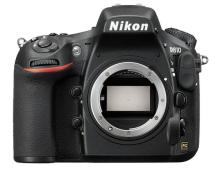



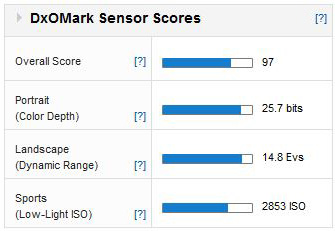
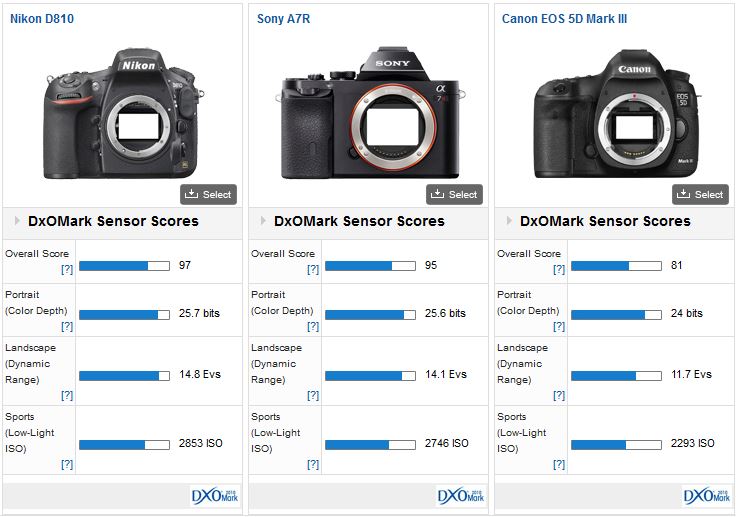
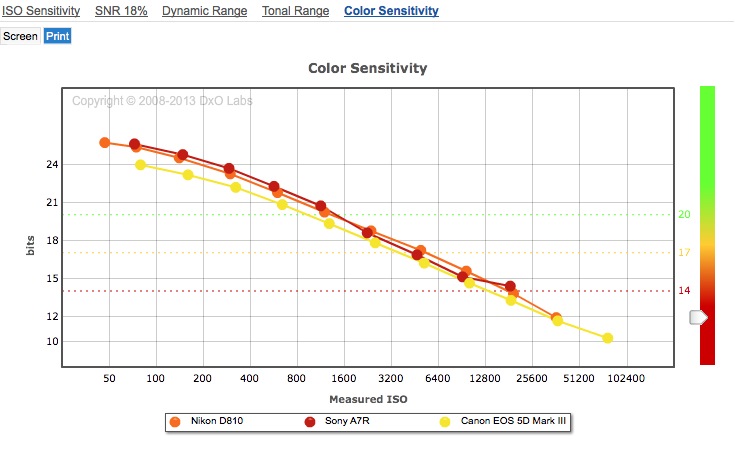
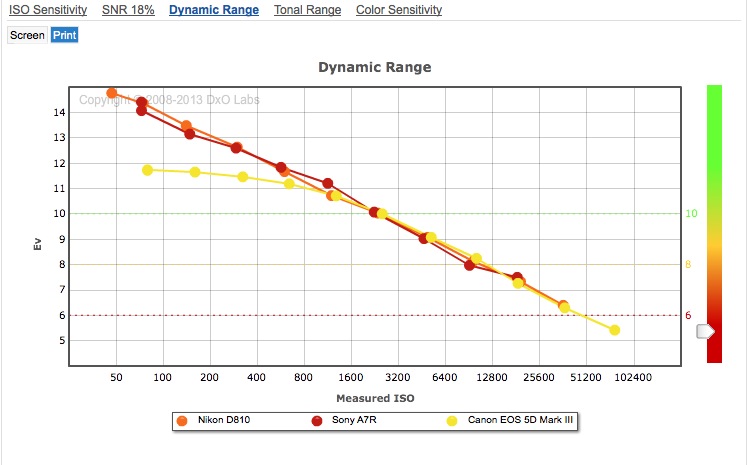
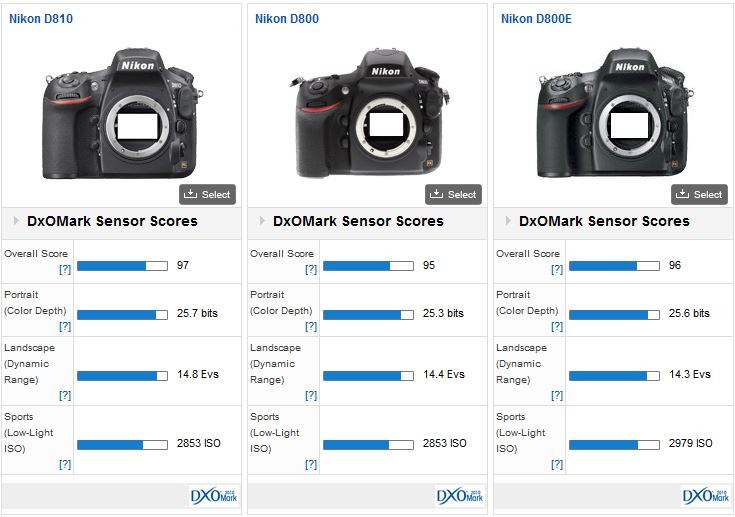
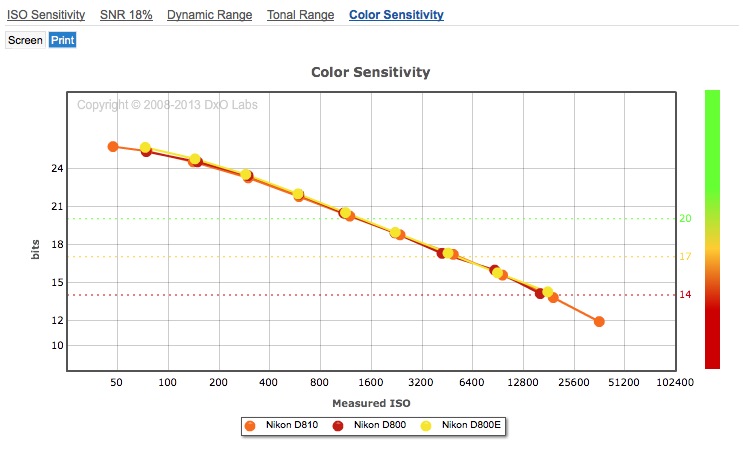
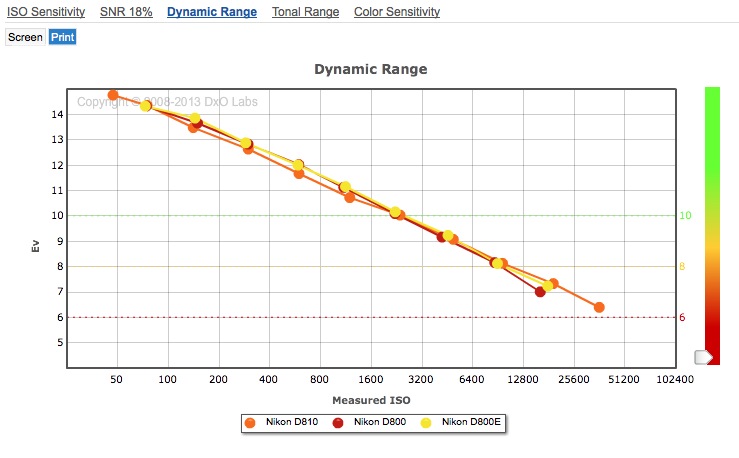



DXOMARK encourages its readers to share comments on the articles. To read or post comments, Disqus cookies are required. Change your Cookies Preferences and read more about our Comment Policy.